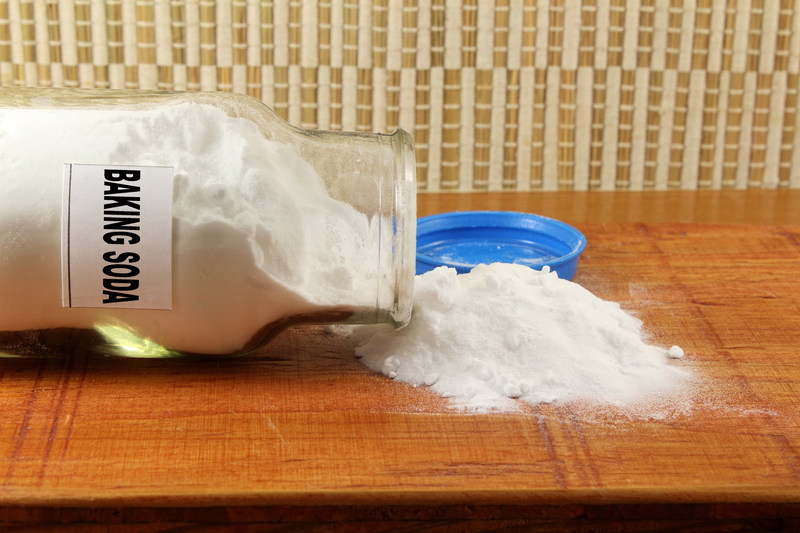Limescale Cleaning for Toilets
Posted on 25/07/2024
Limescale buildup in toilets is a common problem that can be both unsightly and harmful to your plumbing. Limescale, primarily composed of calcium carbonate, forms from hard water containing high mineral content. This article explores effective methods to cleanse your toilet of limescale, providing a detailed guide, practical tips, and discussing the pros and cons of various cleaning techniques.
Understanding Limescale
Limescale is an accumulation of mineral deposits, primarily calcium and magnesium, left behind when hard water evaporates. Over time, this mineral buildup can cause unsightly stains, lead to inefficient toilet performance, and potentially damage plumbing fixtures.

DIY Methods for Limescale Removal
One effective, cost-efficient method of removing limescale from your toilet involves ingredients you likely already have at home. Here's a step-by-step guide:
1. White Vinegar and Baking Soda
- Pour 1 cup of white vinegar into the toilet bowl and swish it around with a toilet brush.
- Add about 1 cup of baking soda followed by another 1-2 cups of vinegar. The solution will fizz and bubble.
- Allow the solution to sit in the bowl for 10 minutes.
- Scrub with a toilet brush, making sure to remove as much buildup as possible.
- Let the solution sit for an additional 30 minutes then flush.
2. Lemon Juice
- Lemon juice is a natural acid that dissolves limescale.
- Pour lemon juice directly onto the limescale spots and let it sit for a few hours.
- Scrub the area with a toilet brush and flush.
Commercial Products for Limescale Removal
Many commercial cleaning products are specifically designed to tackle limescale. These products typically contain stronger acidic solutions that dissolve mineral deposits more effectively than DIY methods. Popular limescale cleaning products include:
- Toilet bowl cleaners: Often containing hydrochloric acid to break down stubborn limescale.
- Limescale removers: Available as thick gels or sprays, designed to cling to the bowl and dissolve heavy deposits.
When using commercial cleaners:
- Follow the instructions carefully.
- Wear protective gloves and ensure adequate ventilation.
Preventing Limescale Build-Up
Regular maintenance can prevent a significant limescale buildup:
- Use a toilet cleaner that targets limescale weekly.
- Install a water softener to reduce mineral content in the water.
- Regularly clean hidden areas of the toilet, such as under the rim.
Pros and Cons of Limescale Cleaning Methods
DIY Cleaning Methods:
- Pros:
- Cheap and uses non-toxic materials.
- Readily available ingredients.
- Eco-friendly.
- Cons:
- May require more effort and time.
- Less effective for severe buildup.
Commercial Cleaning Products:
- Pros:
- Highly effective with minimal scrubbing.
- Quick results.
- Cons:
- Can be expensive.
- Contains harsh chemicals, which may be hazardous.
Tips for Effective Limescale Removal
- Always start with the least abrasive method and only escalate if needed.
- Use natural acids like vinegar and lemon for regular light cleaning.
- For tougher stains, soak paper towels in vinegar and stick them to the stained areas for a prolonged effect.
- Always ensure proper ventilation when using chemical products.

Takeaways
- Limescale is a common issue caused by hard water.
- Both DIY solutions and commercial products can be effective.
- Regular maintenance and preventive measures are essential to avoid significant buildup.
- Selecting the right method depends on the severity of the buildup and personal preferences regarding the use of chemicals.
Conclusion
Limescale in toilets is an annoying, yet manageable problem with the right approach. Whether you prefer natural cleaning methods using household items or opt for powerful commercial products, maintaining a regular cleaning routine is crucial. By doing so, you can prevent unsightly stains and prolong the lifespan of your toilet, contributing to a cleaner, more hygienic bathroom environment. Keep our tips and takeaways in mind to choose the best strategy suited to your needs and ensure your toilet remains free from limescale.








